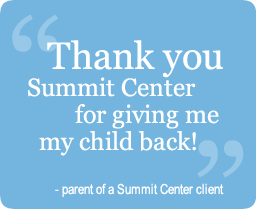This article originally appeared in the January 2013 issue of A Word from Gifted Homeschoolers Forum.
By Dan Peters, Ph.D.
Twice-exceptional individuals are both gifted (show advanced abilities) and also have significant learning or processing delays, as well as emotional and behavioral challenges. While our world has benefited greatly from the minds of 2e individuals such as Albert Einstein, Thomas Edison, Helen Keller, Steve Jobs, and others, our educational system does not seem to understand the complexities and needs of these kids. Many 2e kids face daily struggles in public and private school, while others end up being homeschooled in order to preserve a 2e child’s self-esteem and love of learning.
So what’s the problem? Many 2e kids are not identified as either gifted or learning challenged because their strengths hide the depth of their learning and processing challenges, and their weaknesses pull down their strengths. Basically, we often get a 2e child who is performing in the “average” range and is “doing fine” since he or she is performing at “grade expected levels.” However, when a gifted or highly gifted child is performing “average” or at “grade expected levels,” he or she is not fine. It means that something is getting in the way of learning and output. The 2e child knows that something isn’t quite right, and parents may know too, but can’t quite but their finger on it. Unfortunately, the 2e child is often seen as, and called, “lazy” or not “working to her potential.”
People often ask if this 2e thing is new. No, it isn’t. However, the consequences of being 2e in today’s educational environment seem to have significantly more negative consequences for 2e kids. The main culprit seems to be the well-intentioned Response to Intervention (RTI) movement that was put into practice with the reauthorization of the Individuals with Disabilities Education Act (IDEA) in 2004. In short, RTI is a program that allows all kids to get intervention in the classroom without having to be qualified for Special Education services. This is a good thing overall. But it turns out the being 2e is the most vulnerable type of learner you can be in this model.
Why are 2e learners vulnerable? The reason is that, under RTI, students are deemed to need support based on performing “below grade expected levels.” What’s worse is that in many states “below grade expected levels” is being deemed as the 12th percentile or lower. Yes, that right. So gifted child with intellectual abilities at the 98th percentile or higher have to perform as low as the 12th percentile in reading, writing, or math; or being showing significant attentional and processing issues that impacts their performance to a similar degree, in order to be identified as being behind. Thus, 2e kids are not getting identified, and are not being qualified for Section 504 Plans that give them more time to perform and other free, yet necessary, accommodations. This is happening all over the U.S., as I am working closely with colleagues in several states across the country who are seeing the same things and are equally concerned.
So what can we do? We need to be aware that 2e kids have the characteristics of gifted kids–advanced thinking abilities, uneven performance, intensity, and sensitivities–yet have trouble with inconsistent performance and output. If you see a smart child struggle, there is something wrong, and they need help. If your child is in school, talk to your child’s teacher and ask they be referred to the RTI or SST (Student Success Team) to start the assessment and intervention process. Advocate for comprehensive testing by the school. Educate them about the characteristics of 2e kids and the consequences of daily challenges your child experiences, such as homework and testing taking, for example. Use a collaborative approach with the teacher and staff. We want them on our team. Advocate for an individualized learning plan that maximizes and differentiates for your child’s strengths, while also supporting and accommodating your child’s weakness area.
In sum, a 2e child has high potential, yet is also at great risk for underachievement, depression, and anxiety due to being misunderstood and not living up to their own and others’ expectations. It is critical to understand a 2e child’s strength and weakness profile. Parents may need to seek private testing if the school will not provide this service. Twice-exceptional individuals have changed our world, and will continue to do so. We just have to keep them off the endangered species list.
Dr. Dan Peters is co-founder and Clinical Director of the Summit Center, specializing in the assessment and treatment of children, adolescents, and families with special emphasis on gifted, talented, and creative individuals and families. He presents at state, national, and international conferences on a variety of gifted topics.

